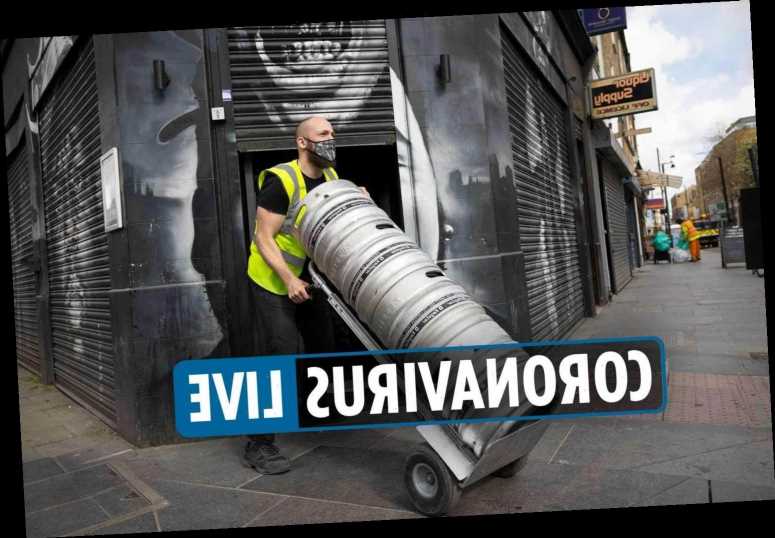- NASA’s Ingenuity helicopter has spun its blades and charged up with solar energy on Mars.
- On Monday, Ingenuity will attempt the first controlled flight on Mars.
- The NASA team is nervous and excited for the high-stakes experimental flight.
- See more stories on Insider’s business page.
NASA’s Ingenuity helicopter is charging up and spinning its blades in preparation to fly above the Martian surface.
The 4-pound drone is set to lift off early on Monday, rise 10 feet above the dusty red ground of Mars’ Jezero Crater, then gently touch back down. The entire flight should last about 40 seconds, but it could forever change the way NASA explores other planets.
Future Mars helicopters could scout out canyons and mountains that rovers can’t access, fly in and out of craters, or even do reconnaissance for astronauts.
As for Ingenuity, if its first flight goes well, the rotorcraft will attempt up to four increasingly difficult sojourns into the thin Martian air after that.
“Each world gets only one first flight,” MiMi Aung, the project manager for Ingenuity, said in a briefing on Friday. “The Wright brothers achieved the first flight on Earth. Ingenuity is poised to go for being the first on Mars.”
The $85 million chopper has completed most of its system checkouts, and its solar panels are absorbing enough energy to power its flight. It spun its blades for the first time on Thursday, though that spin was much slower than it will need to be for flight — 50 rotations per minute instead of 2,500.
“So far so good, knock on wood,” Aung said.
Late on Friday, the helicopter is set to test out a full-speed spin.
Meanwhile, the Perseverance rover, which carried Ingenuity to the red planet, has driven to an outlook about 210 feet away. From its perch, the rover is ready to watch and record footage as its helicopter stowaway takes flight.
But nobody is sure Ingenuity will succeed. So as flight day approaches, the engineers behind the helicopter are anticipating the moment of truth when they’ll find out. Ingenuity will conduct its entire flight autonomously, and it takes at least 8 minutes for a signal from Mars to travel to Earth, and vice versa. So once the process begins, the Ingenuity team can only bite their nails and wait for the signal of success.
Perseverance took a selfie with Ingenuity on April 6, 2021.NASA/JPL-Caltech/MSSS/Seán Doran
“I’m feeling a lot of emotions,” Josh Ravich, who leads Ingenuity’s mechanics teams, told Insider. “A lot of the team, myself included, are very hesitant to celebrate prematurely. So even as we’re making really exciting milestones, getting prepared for first flight, we’re still holding our enthusiasm until that flight happens.”
The feeling extends to NASA’s leaders, too.
“We’re all kind of a little bit nervous and excited at the same time,” Thomas Zurbuchen, the agency’s associate administrator for science, told Insider. “We’re all ready, but we’ll all feel better when it’s done — and successful.”
Flying through air thinner than on the top of Mount Everest
NASA/JPL-Caltech
If the full-speed spin test goes well, NASA expects Ingenuity to fly around 3:30 a.m. ET on Monday. That will be about 12:30 p.m. on Mars’ Jezero Crater, when the sun is bright. NASA expects winds to be helicopter-friendly at that time, too.
Even if conditions are perfect, though, flying on Mars is tough. The air there has just 1% the density of Earth’s atmosphere, making Ingenuity’s task the equivalent of flying three times higher than the peak of Mount Everest. To catch enough lift with so few molecules to push against, the helicopter’s two pairs of blades will have to spin in opposite directions at a speed roughly eight times faster than a passenger helicopter on Earth.
“There were some people who doubted we could generate enough lift to fly in that thin Martian atmosphere,” Amiee Quon, who tested Ingenuity in a Mars-simulation chamber on Earth, said in the Friday briefing.
It worked in the test chamber, but flying on Mars is a different story.
“There are four possible outcomes. The first is for success. Second, partial success. Third could be insufficient or no data coming back, which means we’ll have to take more time to figure out what’s happened. Or it could be failure,” Aung said.
‘High-risk, high-reward’
The Perseverance surface-operations team celebrates the rover’s landing from their mission-control room at NASA’s Jet Propulsion Laboratory, February 18, 2021.NASA/JPL-Caltech
Because Ingenuity is a demonstration of technology that’s never been used on Mars before, it’s “high-risk, high-reward,” according to Zurbuchen.
“There’s a lot of a lot of things that could certainly go wrong, I guess, besides crashing or not working at all. You can imagine 1,000 ways that either of those things could happen,” Ravich said.
The worst-case scenario, he added, is that Ingenuity doesn’t get off the ground at all. Even if it flies a little bit and crashes, the team could potentially salvage data from the robot and learn lessons for future space helicopters.
If the rotorcraft does fly and land smoothly, even just for this first flight, Ingenuity could revolutionize the way NASA investigates other planets.
“Suppose that it does, in fact, work. What we will have proven is that we can add an aerial dimension to discovery and exploration on Mars,” Zurbuchen said. “That aerial dimension, of course, opens up aspects of science and overall exploration that, frankly, at this moment in time, are only our dreams.”
Source: Read Full Article


